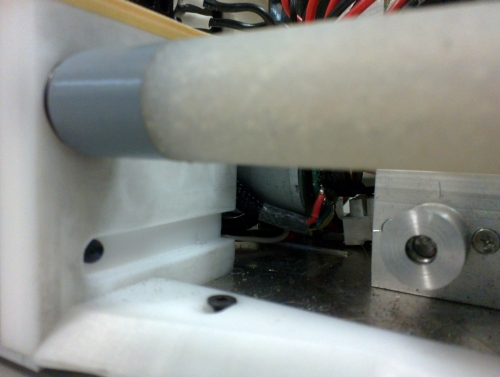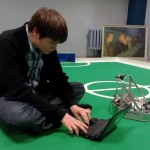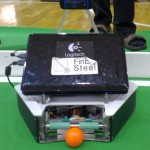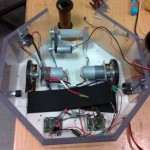There are two types of Robotex robot builders in Tartu – the beginners and the “old sharks”. The first ones are those guys who come in September with no previous experience, and struggle with the simplest things to have the simplest possible solution working by the end of November, when the competition happens. We are one of such teams. Besides us, there are beginner-league teams named Spirit, Sidi, and EKRS. Although I’m not good at being with a camera at the right moment in the right place, I did manage to get some shots.
Daily Archives: November 2, 2011
Ball detector
One sensor that has not been mentioned previously is the “ball detector”. The ball detector helps us to easily detect when a ball has been “caught” by the dribbler and is in a position ready to be hit by the kicker.
The detector is implemented using a classical opto-isolator idea. On one side of the dribbler we put a small infrared LED, that will be constantly emitting infrared light. On the other side of the dribbler, we attach an infrared photodiode (or, to be more precise, we actually use a slightly more sophisticated breakbeam sensor). Now, whenever there is no ball in the dribbler, the sensor will be “seeing” the light from the IR led and produce an “off” (i.e. 0V) signal on one of its pins (note that a conventional photodiode would work the other way around). Whenever a ball comes into the dribbler inbetween the LED and the sensor, it will hide the light from the diode, the signal will go up to “on” (i.e. 5V), and this can be sensed by the controller.
Of course, in theory we could detect the fact that the ball is in the dribbler purely from the camera image, but having a dedicated ball detector sensor is easy and convenient.




